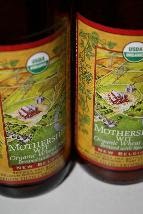.jpg) It has been awhile since I've reviewed a beer but I'm back! Hopefully you didn't miss me too much :P This time I am reviewing for the first time, a brew from Stone Brewing Company (one of my favorite Brewing Co's).
It has been awhile since I've reviewed a beer but I'm back! Hopefully you didn't miss me too much :P This time I am reviewing for the first time, a brew from Stone Brewing Company (one of my favorite Brewing Co's). Stone Brewing Co comes to us from Escondido, California (just north of San Diego for a quick geographical reference), and is a very large distributor of beers up and down the west coast of the US. Now the question you may be asking is whether or not Stone Brewing Co is considered a microbrewery. The technical definition of a microbrewery is a brewery that produces small batches of beer and typically only distributes them locally, or regionally, but never cross-country or internationally. I suppose Stone Brewing Company can be considered a craftbrewery, which defines the approach to making the beer rather than the distribution or amount. And so now that we have clearly defined Stone as a craftbrewery, let's continue on here.
Stone Brewing Co brews great beer. That much is apparent. The tastes are unique and despite the broad distribution one can find its brews (from Safeway to World Market and QFC to PCC and Haggen), it still retains the uniqueness and most importantly, the deliciousness. Just to name afew of its popular brews: Stone IPA, Arrogant Bastard Ale (yes, this is a beer), Ruination IPA (one of my all-time faves), Smoked Porter, and Old Guardian Barley Wine. They also have a selection of limited and special release brews, which includes my friend here: The Cali-Belgique IPA, Double Arrogant Bastard Ale, and an Imperial Russian Stout. Typically we find them sold in 22 oz bottles, but I have seen them sold in 6 packs as well (I just so happened to find this beer in a 22 oz bottle at the Haggen in Burlington). Chances are good that if you see Stone Brewing Co on the side of a bottle, it's good and you won't disappoint yourself by purchasing it. So go for it! Reach for something new, and if it just so happens to be from Stone, be ready for a good ride! Now onto the beer!
Name: Cali-Belgique IPA
Category: California Style India Pale Ale
ABV: 6.9%
IBU: 77 IBU
OG: Unknown
Malt Types: Unknown
Hop Types: Columbus, Centennial, Dry-hopped with Chinook
The Pour: Pale golden yellow, clear, definitely filtered. The head is white and fluffy, good amount of lacing, and good retention.
The Nose: Sweet and syrupy, hints of belgian yeast, hints of canned dole pineapple and pine trees as well as citrus (oranges and grapefuit). I'm getting some hints of bubblegum? I'm detecting also a slight mustiness. Overall, it is very sweet (a sweetness typical of many belgian ales), and appealing. I'm excited to try this unique IPA.
The Taste: Initially spicy, medium carb, sweet on the palette. Definite sweet pine notes traveling up into my nose. Light sweetness in the middle and the finish is mellow, ending with a nice amount of lingering bitterness. Really well balanced.
The Verdict: A very traditional IPA here. As the back of the bottle states, the aroma is a bit funky and different from regular Stone IPA, mostly due to the fact they used belgian yeast strains rather than their standard ones. The flavor is very well-balanced and I definitely would not say it is overly bitter. For someone testing the waters of the IPA, this might not be a bad one to try out. And for everyone out there already a fan of the IPA, then this provides you with a twist on the average IPA. Go pick up a 22 ouncer of this, and you won't be disappointed.



.jpg)






.jpg)

.jpg)



+(size+edit).jpg)
.jpg)




